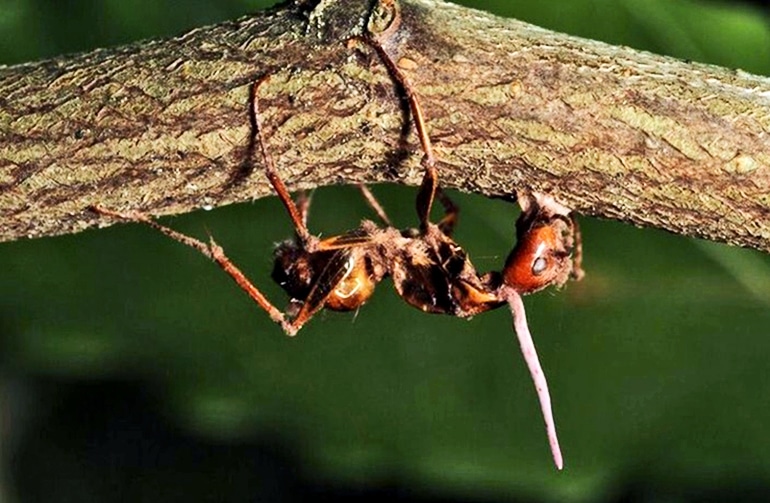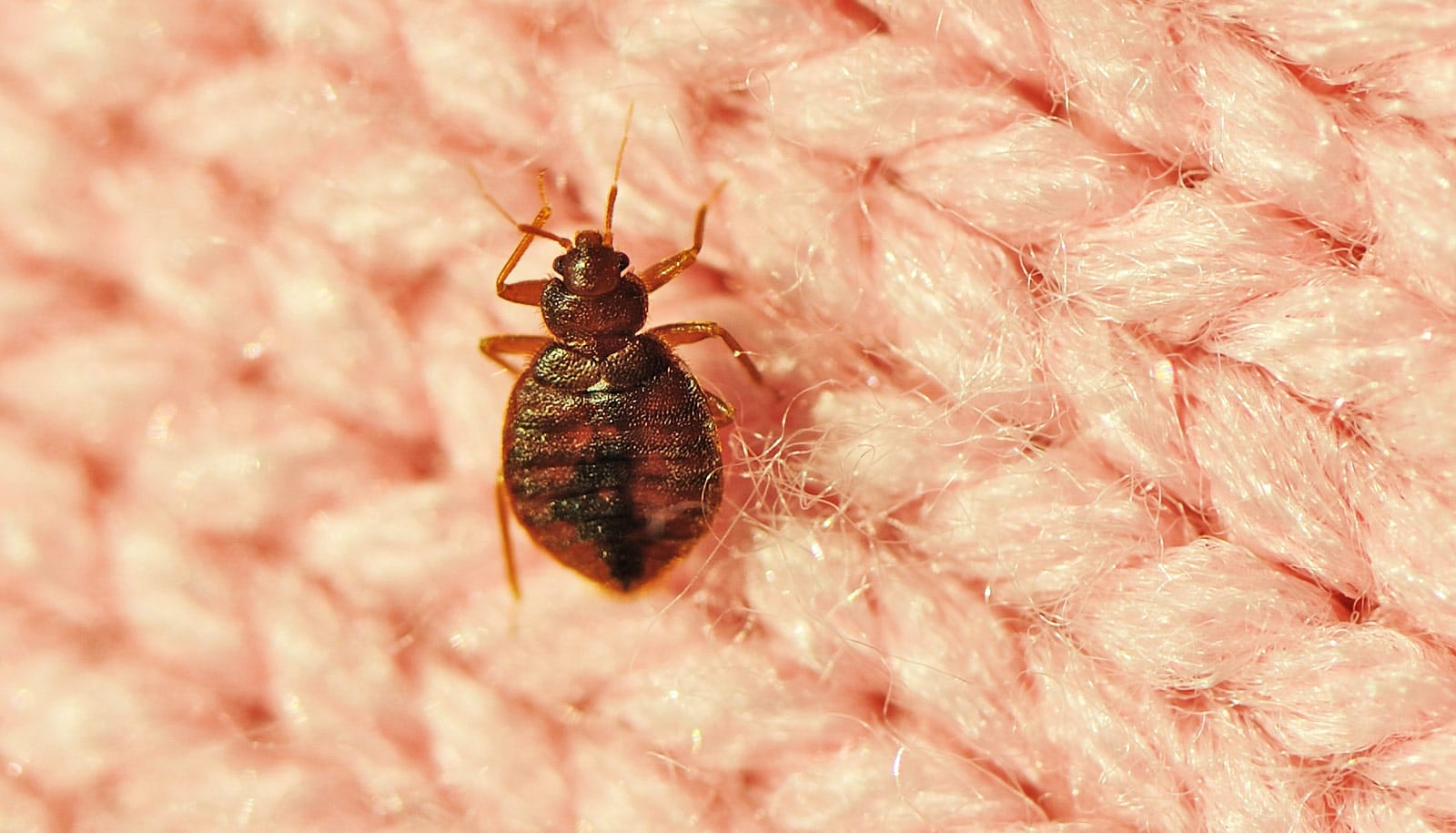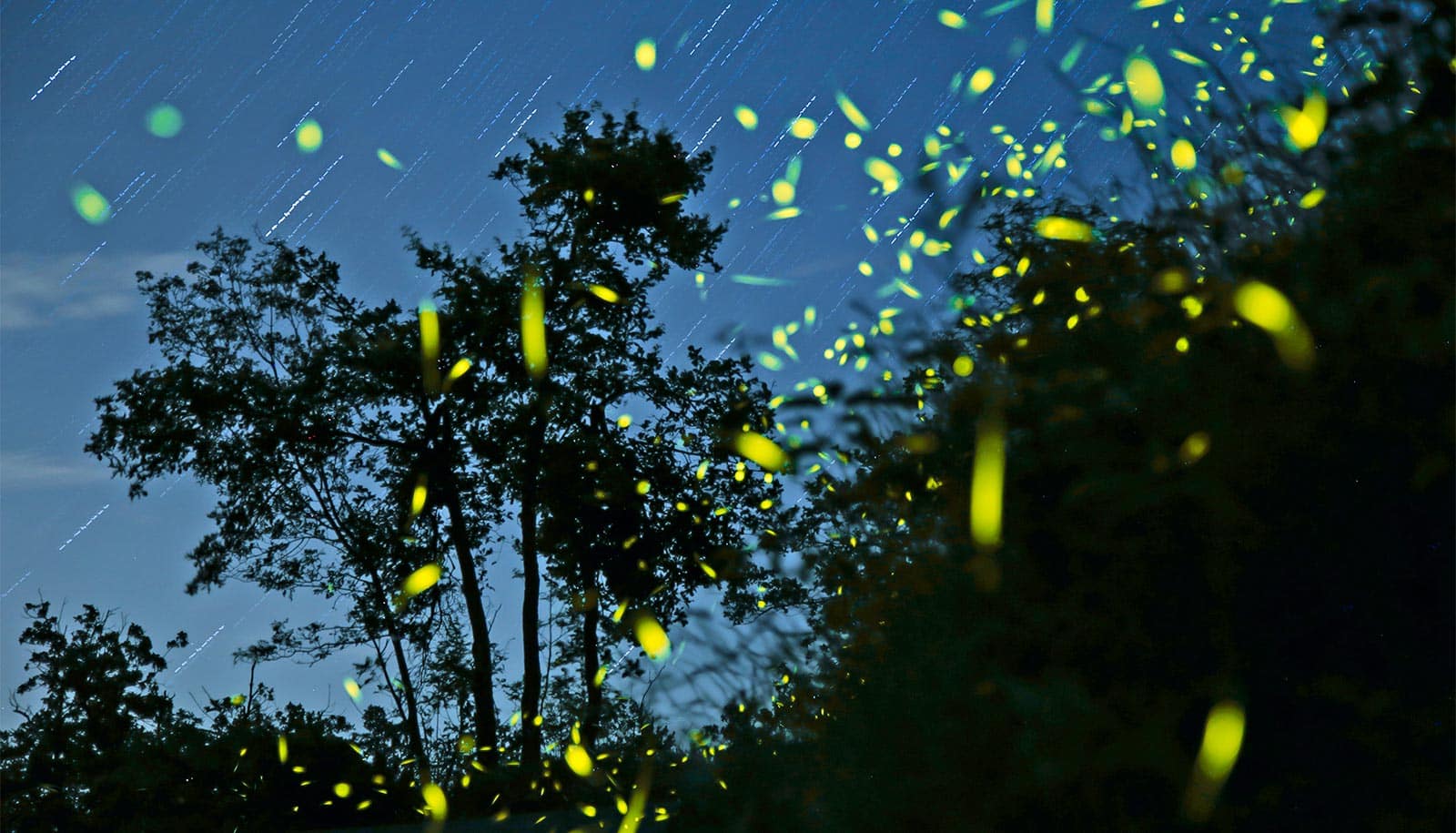Carpenter ants don’t attack or isolate their nest mates infected with a specialized parasitic fungus, and instead continue to share the colony’s food resources until the infected ants leave the nest for the last time to die, according to a new study.
The findings suggest that, although the fungus is deadly to infected individuals, it is only a chronic condition for the colony—one that does not induce the kind of strong defensive measures thought to be common in social insect societies, the researchers say.

Studies have shown that fungal pathogens from the genus Ophiocordyceps—known as “zombie ant fungus”—control the behavior of carpenter ant workers, compelling them to climb vegetation and bite the veins or margins on the underside of leaves. The infected ants die, remaining attached to the vegetation postmortem. There, the fungus grows and releases spores onto the forest floor below, where they can infect other foraging ants.
Social security
“Previous work suggested that insect societies protect the colony through social immunity,” says lead author Emilia Solá Gracia, postdoctoral scholar in biology at Penn State. “It was thought that during social interaction, ant workers detect infections in their peers and display aggression toward them or remove them from the nest.
“…the parasite is able to fly under the radar of the colony’s defenses.”
“This fungus, which coevolved with its host, takes 14 to 21 days to develop in infected individuals before compelling them to leave the nest and perform their last act. The question is, during this development, does the pathogen change how infected ants interact with others or alter the chemical cues they emit, which allows nest mates to detect the infection? Such detection would be optimal for the colony since infected workers die near foraging trails where the fungus releases spores that infect other members of the colony.”
To test the hypothesis that healthy colony members recognize infected individuals, the research team looked at whether nest mates attack infected ant workers, whether they spend more or less time in trophallaxis—socially exchanging food, and whether they are spatially separated from other colony members inside the nest.
The researchers collected ants from forested areas in South Carolina and established three colonies in a laboratory, each colony consisting of three groups of worker ants. Researchers left one of the three groups untreated—healthy, injected the second with a growth medium containing the parasitic fungus, and gave a third the growth medium alone. The ants were marked with unique dot patterns on their head, thorax, and gaster so individuals could be followed over time.
They affixed a modified GoPro camera fitted with both an infrared lens and a macro lens on top of the colonies to capture recorded video virtually 24 hours daily.
Dodging colony defenses
While observing the 1,240 hours of video footage, the researchers, who report their findings in PLOS ONE, saw no attacks toward individuals injected with the fungus and found no significant difference in food sharing between infected and uninfected individuals.
The team did find that infected individuals spent considerably more time inside near the nest entrance and spent more time outside the nest than healthy workers.
“It could be that spending more time outside the nest is an early signal of fungal manipulation, which ultimately requires its host to leave the nest for fungal reproduction to occur,” Solá Gracia says. “But the most significant finding is that this coevolved parasite doesn’t seem to directly affect social dynamics within the colony.”
Mysterious ‘lazy’ ants have jobs after all
Taken together, these results suggest healthy individuals do not detect the parasite inside their nest mates, according to senior author David Hughes, associate professor of entomology and biology.
“The colony’s inability to detect infected individuals allows the fungus to develop within the colony, while receiving food and protection from natural enemies that could damage or kill its ant host before the parasite has completed its development,” he says.
“Based on our observations and the biology of the fungus, we suggest that the pathogen is a chronic parasite of the colony that is able to survive without triggering strong behavioral defenses in the society—in short, the parasite is able to fly under the radar of the colony’s defenses.”
Other researchers on the project are from Penn State and the University of Central Florida. The National Science Foundation supported this work.
Source: Penn State



